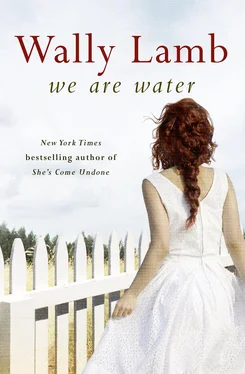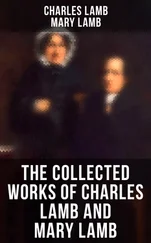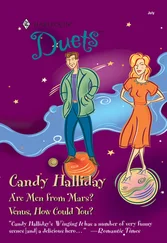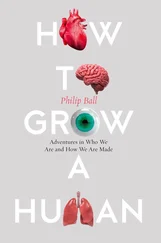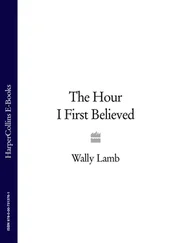Mr. Skloot is the best boss he’s ever had, Joe says. When I ask him why, he says, “Because he pay good and he kind. Lets us live out back on his property, and he don’t even care that Rufus got hisself a white wife. Rufe married his gal when he was stationed over in Europe and brung her over here after we was working steady. She Dutch.” Joe touches his work boot to the box at his feet. “I got other paintings at the house, you know. Lots of ’em. If you like these ones, maybe you want to see those ones, too.” I tell him I do and arrange to meet him at his home at six o’clock that same evening.
The house is a small cottage at the back of the Skloots’ property. Following Joe’s instructions, I drive down the Skloots’ driveway, then inch my car over a rutted path out back until I get to a brook. I park and get out, then cross the brook by way of two bowed two-by-six planks that have been placed over it. A thin white woman—Joe’s brother’s Dutch wife, I figure—is outside, hanging clothes in just her slip. When I ask her if Josephus is home, she sticks out her thumb and points it toward the door. Before I can knock, it swings open and Jones invites me in.
The place is filthy. It reeks of stale cooking odors and cat urine, and there is clutter everywhere. A fat calico cat is asleep on the kitchen table amidst dirty dishes, old magazines, and an ash tray brimming with stubbed-out cigarettes. The floor beneath my shoes feels gritty. Josephus’s paintings are everywhere: stacked against walls and windowsills, atop a refrigerator whose door is kept shut with electrical tape. There are more paintings scattered across the mattress on the floor and on the dropped-down Murphy bed. “What’s this one called?” I ask Joe, pointing to a female figure in a two-piece bathing suit standing in a field of morning glories, parakeets alighting on her head and outstretched arms.
“That one there? Thass Parakeet Girl .” When I pick it up for a closer look, the roaches hiding beneath it scuttle for cover.
But housekeeping is beside the point. I look closely at every work he shows me, overwhelmed by both his output and his raw talent. I’m there for hours. Some of his paintings are more successful than others, of course, but even the lesser efforts display an exotic, unschooled charm and that bold use of color. Before I leave, I offer him a show at the Statler. He accepts. When I get home, I tell my wife that I may have just discovered a major new talent.
But “Josephus Jones: An American Original” is a flop. The local paper, which is usually supportive of our museum shows, declines to publish either a feature story or a review. At the opening, instead of the usual two hundred or so, fewer than twenty people attend. Not even Angus and Ethel Skloot have come; they are on holiday in Florida. It’s painful to watch the Jones brothers scuff the toes of their shined shoes against the gallery’s hardwood floor and eye the entranceway with fading hope. Both have purchased sharp double-breasted suits for this special occasion, and Rufus’s Dutch-born wife has apparently bought new clothes, too: a sparkly, low-cut cocktail frock more suitable for an evening at a New York supper club than a Sunday afternoon art opening in staid Three Rivers, Connecticut. Worse yet, she has neglected to remove the tag from her dress, and I have to instruct my secretary, Miss Sheflott, to go upstairs to her desk, retrieve her scissors, and discreetly escort young Mrs. Jones out into the foyer for the purpose of clipping her tag. Later, Miss Sheflott tells me she tucked the tag inside the dress rather than removing it. Mrs. Jones has confided that she can’t afford it and is planning to return it to the LaFrance Shop on Monday.
In the days that follow, there are complaints about the show’s prevalence of female nudity. Three members of the Friends cancel their memberships in protest. In the six weeks the show is up, the number of visitors is dismally low—our worst attendance ever. I’ve penned personal letters to several influential New York art dealers and critics, inviting them to discover Jones. “He is a painter of events commonplace and exotic that are shot through with an underlying sense of anxiety,” I have written. “His compositions are rich with surprises, some joyful, some sinister. In my opinion, he stands shoulder to shoulder with other American primitive painters, from Grandma Moses to his Negro brethren, Jacob Lawrence and Horace Pippin, and the breakthrough artists of the Harlem Renaissance.” But none of those busy New Yorkers to whom I’ve written has had the courtesy even to reply, let alone trek the three hours to our little museum to see Josephus’s work for themselves.
The show ends. We keep in touch from time to time, Joe and I. I encourage him, critique the new work he sometimes brings by. I’m sad to learn from Joe that his brother Rufus’s wife has left him, and that Rufus has taken it badly—has fallen in with a bad crowd and begun using heroin. “Mr. Skloot let him go after he found out he be messin’ wiff the devil’s drug,” Joe says. “Booted him out of the house out back, too. I been saving up some to send Rufe to one of them sanctoriums to get hisself clean, but they cost more money than I gots. If I could sell some paintings here and there, I could do it, but ain’t no one like them enough to buy any.” I try several more times to interest my New York connections in Joe’s work—alas, to no avail. Eventually, he stops coming around to the museum and we fall out of touch.
But in the summer of 1959, during Three Rivers’s celebration of its three hundredth anniversary, I am asked to judge the art show on the final day of festivities. It’s a big show; more than three hundred artists, accomplished and amateurish, have submitted work for consideration. Most have chosen “pretty” subject matter: quaint covered bridges, romanticized portraits of rosy-cheeked children, and the inevitable still lifes of flowers and fruit. As I wander the grounds, looking for some thing to which I can affix a “best in show” ribbon and still sleep that night, I come upon Josephus’s work at the south end of the festival grounds. Delighted and relieved, I scan what I have previously admired: Parakeet Girl , Jesse James and His Wife , his pictures of pinup girls and fishermen midstream, ukulele players and circus curiosities. One theme seems to prevail in Jones’s work: predators—lions and tigers, lynxes and leopards—attacking or about to attack their prey. Then, among these familiar paintings, I see a spectacular new one—twice as large and twice as ambitious as the others. At the center of the composition stands the Tree of Life, lush and fecund. Beneath it are a pale, naked Adam and Eve. The latter figure is reminiscent of the prepubescent Eves of Van Leyden, the sixteenth-century Dutch master. Adam, though his skin is gray rather than brown or black, bears the face of Josephus Jones himself. The benign members of the animal kingdom who surround the two human figures seem almost to smile. But trouble lurks, in the form of the treacherous serpent hanging from the tree. Joe has depicted a moment in time. Adam reaches for the forbidden fruit which Eve is about to pluck. It will be the fateful act of self-will that will banish them both from the garden. Innocence is about to be lost, and we humans, forever after, will be stained with our forebears’ original sin. In Adam and Eve , Jones is once again exploring the theme of the predator and the prey, but he has done so in a more subtle and masterly way. Adam and Eve is a leap forward—a stellar achievement, and I am elated to hang the “best in show” blue ribbon next to it. The festival gates swing open to the public at 9:00 A.M. As I exit, they push past me, eager not so much to view the art, I suspect, as to fill their bellies with the pancakes that are being cooked and served inside the tent by a large black woman gotten up to look like Aunt Jemima. I admire the organizers’ cunning. If you want people to flock to art, lure them with pancakes.
Читать дальше
